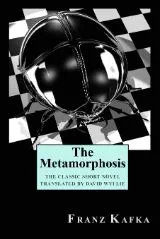The Handmaid's Tale by Marg...
It may be more famous for its media adaptatio...
By Ethan Griffin1271

0

The first time you hear of a man metamorphosing into a giant insect, your first impression would probably be disgust, and it should be.
After all, this is probably the effect Kafka was going for, but why would he do so? Why would he write an absurdist novella where the protagonist turns into a giant insect and tries to cope with his metamorphosis that turned his life upside down? This novella was published posthumously, and it reflects certain aspects of Kafka’s life, which he couldn’t change with his actions, but rebelled against in his writings.
Gregor Samsa’s miserable life became one of the most influential stories in the 20th century and it still resonates within the minds of every Kafka fan due to how beautifully Kafka captured bureaucratic enslavement and familial scorn that he suffered from.
Gregor Samsa wakes up one day to find himself turned into a giant bug that can’t even get off the bed. He tries to calculate how he will move, how he’ll hide his hideous figure from his family in the confinement of his room, and how he is going to avoid going to work.
However, the truth comes out eventually, and no one is really wondering how did this happen. Instead, his family is simply disgusted by Gregor and trying to maneuver around the unfortunate event, thinking of how they are going to continue on with their lives without their Gregor providing for them.
His father even attempts to hurt him and makes his thoughts on Gregor’s uselessness very obvious. Gregor’s fragile, ugly body does not withstand the new circumstances, neglect, and cruelty directed towards him, which leads toward the culmination of the story when his family finally manages to continue their lives without him.
The height of Kafka’s genius reaches its peak in The Metamorphosis. When Gregor loses his human body, he doesn’t lose his mind, but his family still treats him as an abomination and puts him on lockdown, which means his mind is imprisoned within what was once his room.
His father, driven by society standards, ensconces Gregor in his room, which is a recurring event in all Kafka’s stories. This speaks volumes about what he felt about his society.
All these elements formulated what is now known as the Kafkaesque style, and while it has a tone of horror, absurdist quality, and bureaucratic vagueness, these elements make The Metamorphosis one of the best literary works of all time.
Updated 4 years ago